Ricoh KR-10M 35 mm SLR camera
This is another post in my series about my vintage camera collection. The camera in question here is the Ricoh KR-10M, which is a manual focus 35 mm camera made in about 1990. It is fitted with a Pentax K mount lens and has aperture priority auto exposure along with fully manual mode. My example has a Rikenon 35-70 mm f/3.4-f/4.5 zoom lens fitted.
Ricoh KR-10M Images


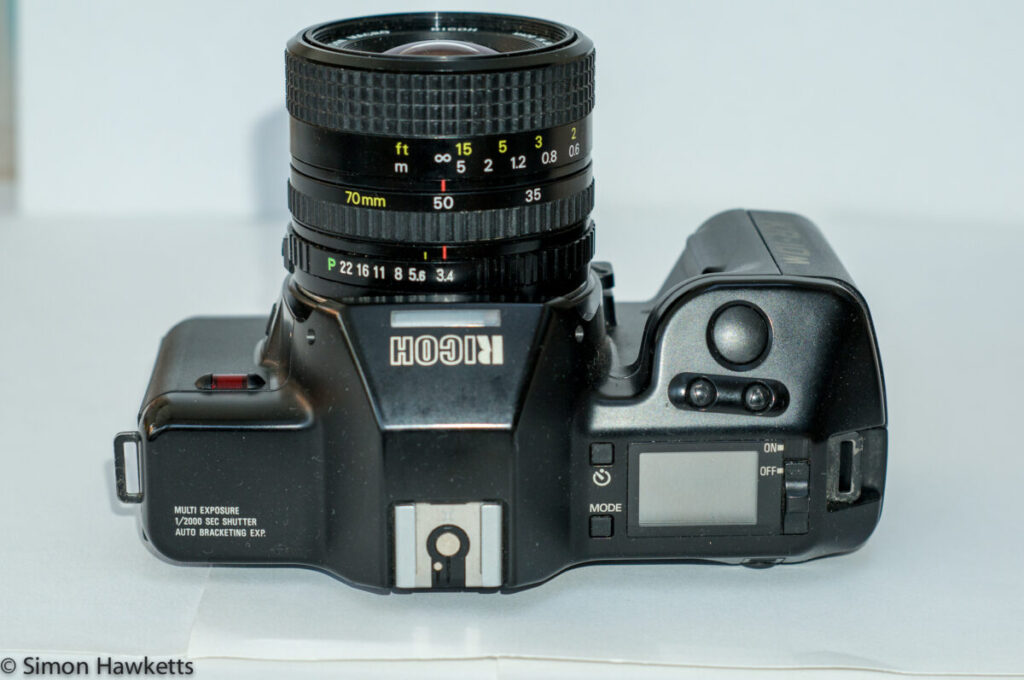
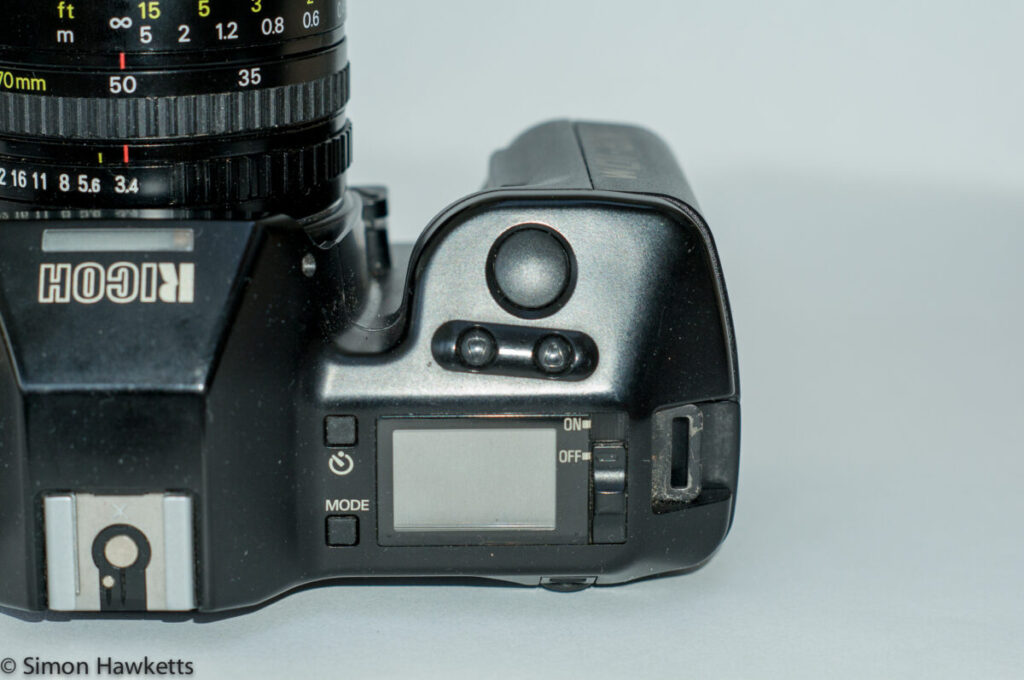
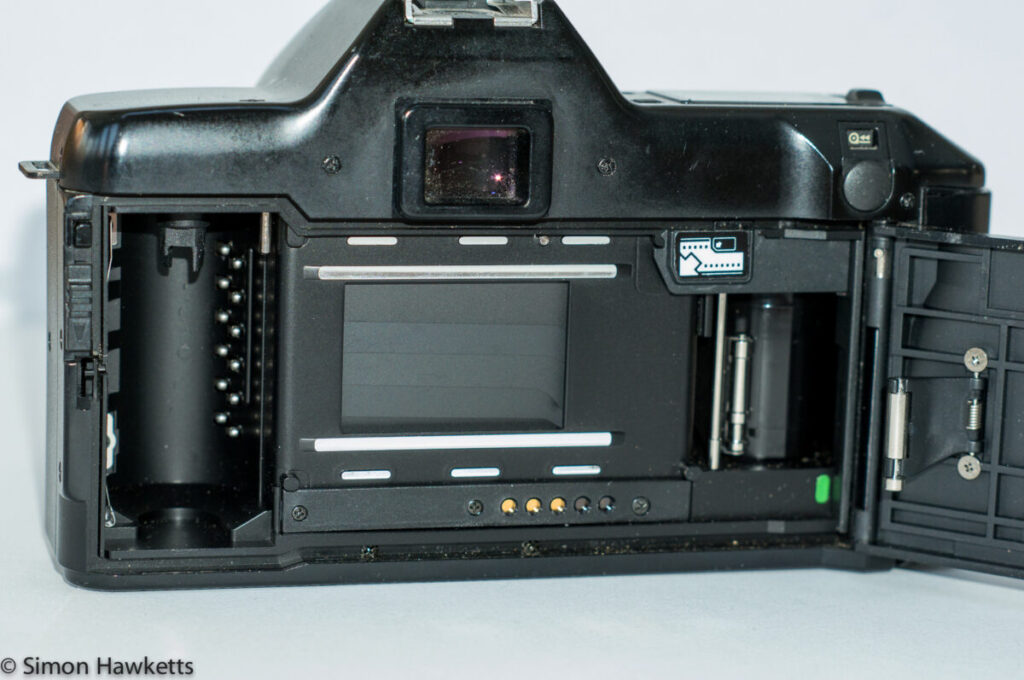
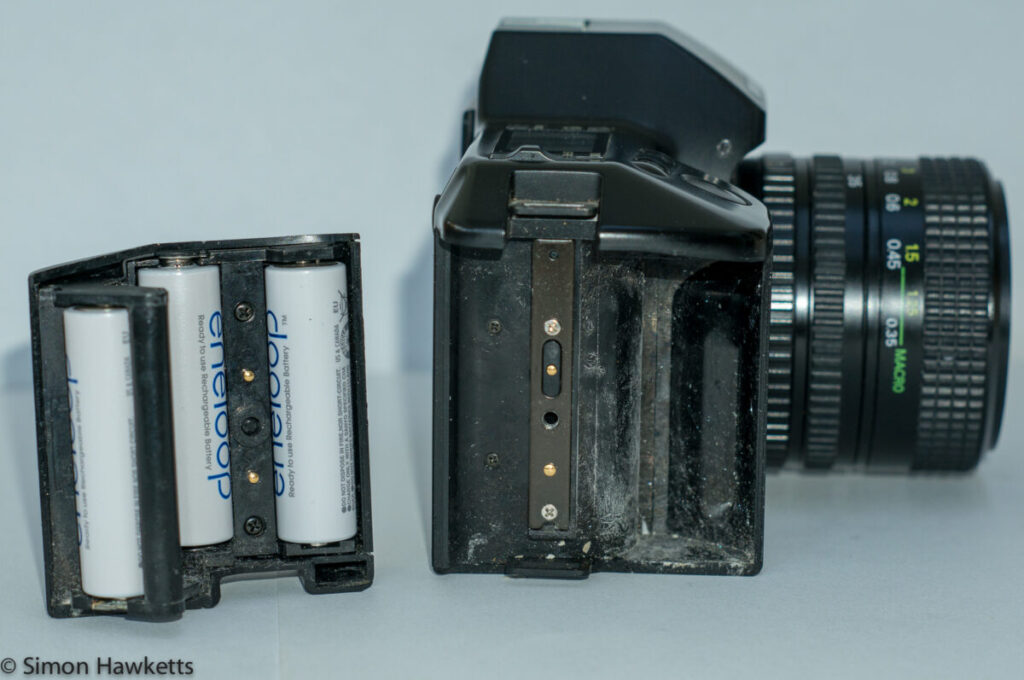
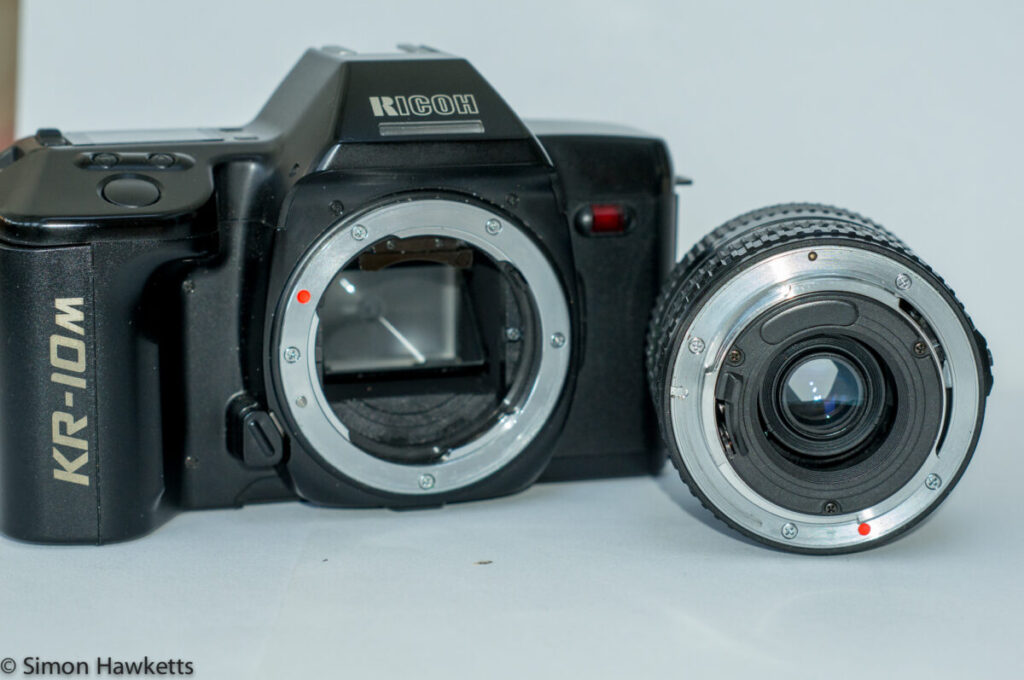
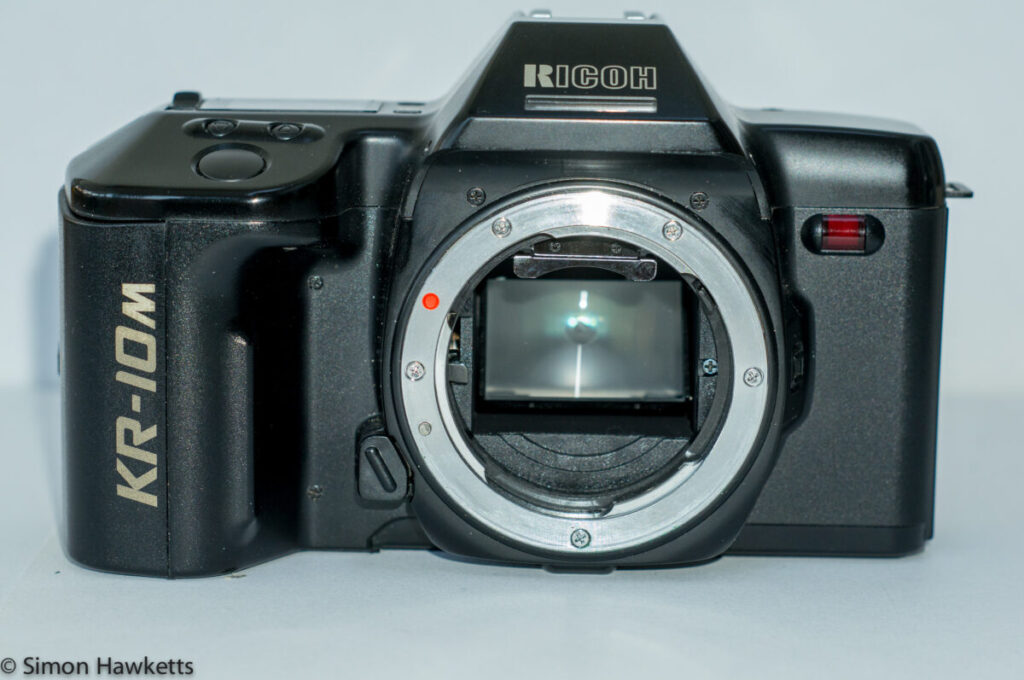
Ricoh have quite a pedigree when it comes to camera manufacture, but were quite a niche player. Their reputation was to produce solid, dependable cameras aimed squarely at photographers (as opposed to people who just want to take snaps) but I think they lost that a bit with the point and shoot offerings of the last few years. Their purchase of Pentax a couple of years back may bring them back into the mainstream, and I think Pentax and Ricoh are good partners whose reputations should gel well.
Ricoh KR-10m General Description
This camera is definitely from the solid, dependable era. It seems pretty well-made and strong, and is certainly heavier than some of my other, more plastic vintage cameras. There is a nice, well contoured hand grip which also contains the 4AA size batteries which power the film advance and exposure systems.
The controls are very simple, especially when compared with today’s cameras. There is an On-Off switch next to the top plate LCD panel and two finger operated buttons next to the shutter release which control the shutter speed in manual mode and any exposure compensation value. To the left of the LCD are two buttons for the mode change and setting the exposure self timer. On the side of the lens barrel is an exposure lock button.
There is a standard flash hot shoe on the top of the prism housing and a standard tripod mount on the bottom of the camera. Solid metal strap holders are fitted to the side of the camera.
The film speed is read from DX coded film canisters bit if you use a non DX coded film the camera will set itself to ISO100 and you need to compensate for this with the exposure compensation setting! That sounds a bit odd, but I guess anyone who owned one of these just made sure they bought DX coded film.
There is a small red window on the front right hand side and after a bit of internet research it seems this is an infra red sensor for an electronic shutter release – quite advanced for it’s day I would guess.
Viewfinder
This camera is from an age where camera manufacturers were just starting to put more shooting information in the viewfinder. In this camera that information is shown full length across the bottom of the display and consists of the shutter speeds the camera can be set to with a small square under each one. As the shutter speeds change, the squares light up to show the selected speed.
The display itself is, as is common with 35 mm film cameras, big and bright compared to modern APS-C sensor digital cameras (I’ve never looked through the viewfinder of a modern full frame digital camera unfortunately, so I can’t compare with that). In the middle of the frame is a Fresnel ring to assist with focusing and a 45 degree split range finder, which is typical on manual focus cameras and would be a useful addition to many modern optical viewfinder cameras.
Lens
The lens fitted to my example of the camera is a Rikenon 35 – 70 mm F/3.4 – F/4.5 macro zoom. I’m not sure if this is the lens which was originally supplied with the camera or not, but it is a Pentax K mount lens which means I can try it on my K-5 or, via an adaptor on my NEX 6, to check its quality.
It is fairly well constructed, with a metal lens mount, quite smooth focus and zoom adjustment rings and a 52 mm filter thread. There is the usual aperture control ring which can be set to P to allow the camera to automatically set the aperture, or to the set aperture value required. There are 6 aperture blades fitted, so the bokeh won’t be perfectly circular, but that is standard for a lens of this vintage and quality (it is a standard kit lens after all).
Operation Modes
The normal operating mode of this camera is Aperture Priority mode, which is achieved my pressing the up or down key on the top plate buttons until the word Auto appears on the LCD, and selecting the desired aperture on the lens aperture ring. As I said above, there is an indiction in the viewfinder of the shutter speed selected or if the shutter speed is too low.
The camera can also be operated in full manual mode by selecting the shutter speed with the top plate buttons and the aperture with the ring on the lens.
There is an exposure compensation setting available on the mode button which allows from -4 to +4 stops of compensation when the camera is in auto mode, and there are also a some autowinder options which allow exposure bracketing and what seems like about 2 frames per second exposures. The final setting which I think I could work out is the ability to take multiple exposures without film advance.
Ricoh KR-10M Specs
- Shutter Speed 16sec – 1/2000
- Aperture Priority Auto Exposure
- +/- 4 stops exposure compensation
- Motor drive film advance
- Split image rangefinder style focusing screen
- Multiple exposures without film advance
- Pentax K lens mount
- Flash hot shoe
- In viewfinder exposure information
- DX coded film
- Exposure Lock button
Overall this is a solid, well made camera which quite a good feature set for it’s day although with a few oddities (like inability to set the film ISO).
The handbook for this camera is available at the excellent CameraManuals site run by Mike Butkus.
Discover more from Everything Vintage
Subscribe to get the latest posts sent to your email.

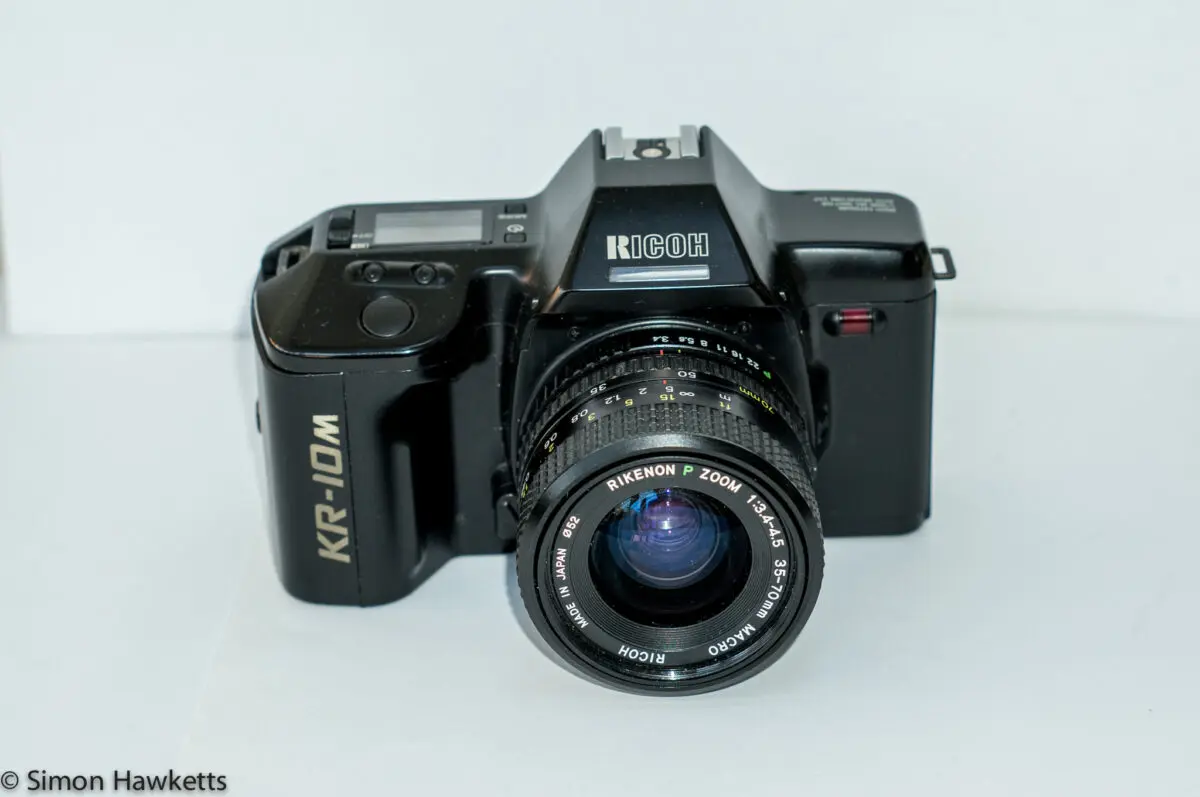
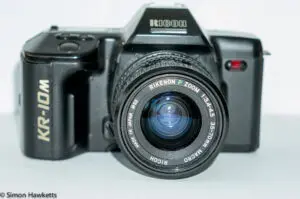
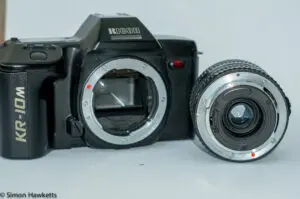

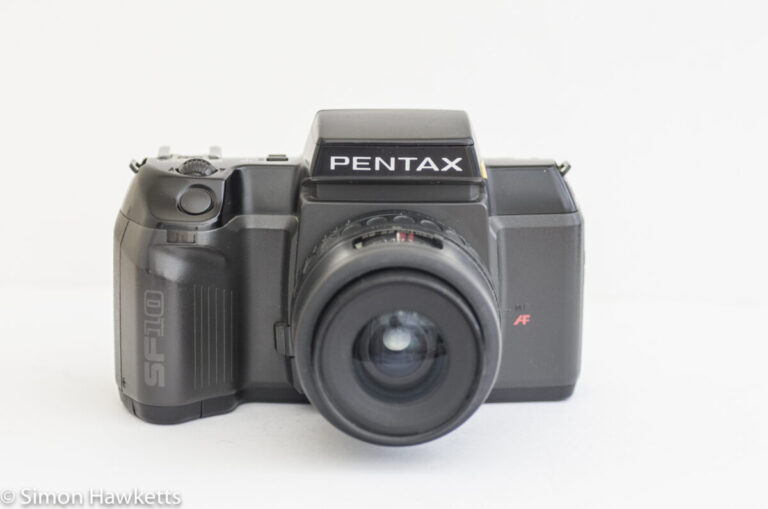
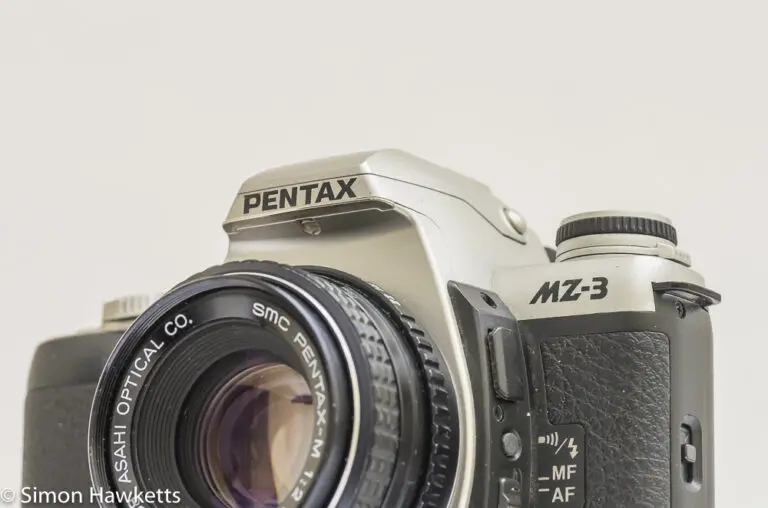
Hi, I have one from about 1991. Have cleaned battery terminals etc, put in new batteries but wont power up. Any ideas on what the problem is?
Thanks